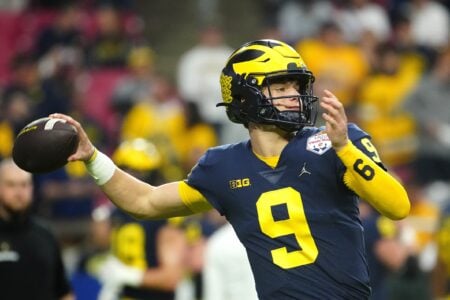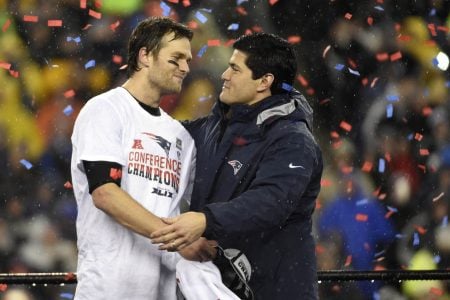Fencer
Pro Bowl Player
- Joined
- Oct 2, 2006
- Messages
- 14,293
- Reaction score
- 3,986
Fact: The Pats played a lot of 4-3 in preseason
Fact: The Pats played a lot of 4-3 in their first Super Bowl run, and some subsequently
Fact: BB insists it always has been a 2-gap defense
Guess: In a 2-gap 4-3, DTs line up over OGs, and DEs over OTs. The strong-side OLB lines up over the TE, jamming him if he tries to go out for a pass or, if he doesn't, treating him as a blocker the same way the DL do the OL. The ILB shares responsibility with the DTs for the gaps to either side of the C -- and by the way, in most cases the C will double on one of the DTs. The weak-side OLB -- uh, he reads the play and does what's needed, or else he takes the job of somebody who's stunting/blitzing, or else he rushes the passer himself.
How am I doing?
Fact: The Pats played a lot of 4-3 in their first Super Bowl run, and some subsequently
Fact: BB insists it always has been a 2-gap defense
Guess: In a 2-gap 4-3, DTs line up over OGs, and DEs over OTs. The strong-side OLB lines up over the TE, jamming him if he tries to go out for a pass or, if he doesn't, treating him as a blocker the same way the DL do the OL. The ILB shares responsibility with the DTs for the gaps to either side of the C -- and by the way, in most cases the C will double on one of the DTs. The weak-side OLB -- uh, he reads the play and does what's needed, or else he takes the job of somebody who's stunting/blitzing, or else he rushes the passer himself.
How am I doing?

















